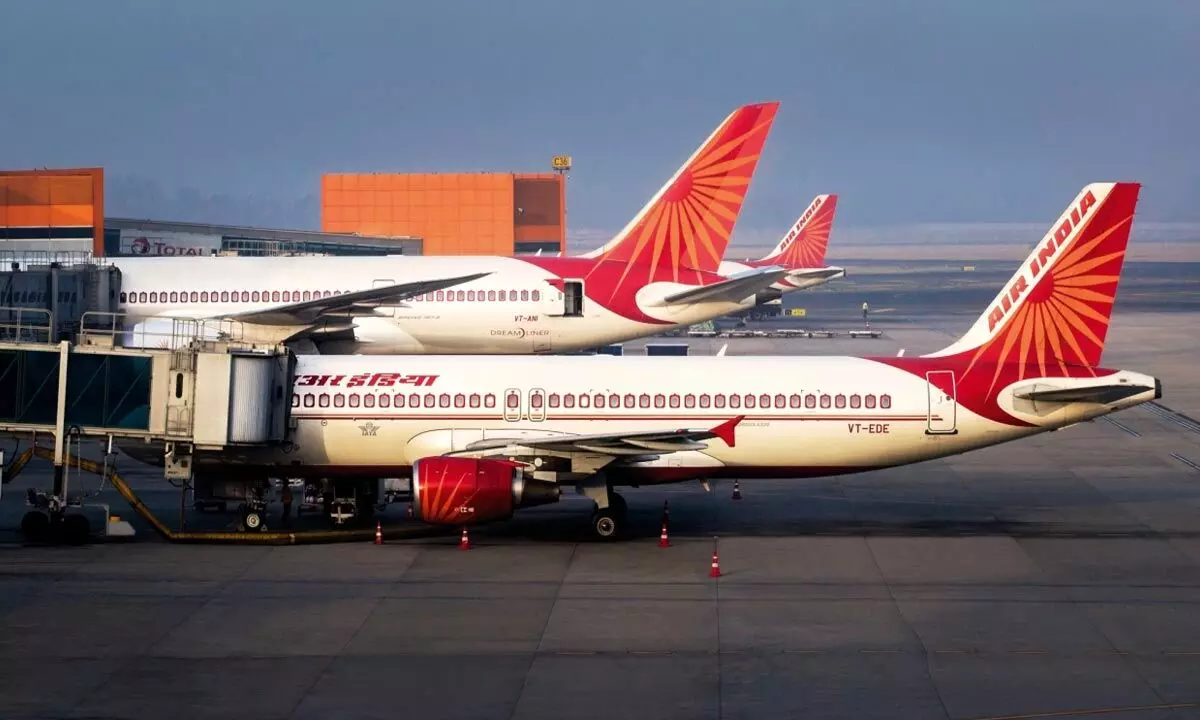Prospects of Indian aviation industry skyrocket after Air India’s mega purchase
Tata-led carrier’s record order for commercial aircraft from Boeing and Airbus has reawakened industry
image for illustrative purpose

The process of reviving Air India has become a win-win scenario both on the economic and political fronts. Aviation experts are talking in terms of India becoming an international hub for travellers beating competition from west Asian countries
The news that Air India has placed the biggest ever order for commercial aircraft from Boeing and Airbus has sent ripples across the global and domestic aviation industry. This development evidences that the Indian aviation sector is on the robust recovery path after the dismal pandemic phase. The order for 470 aircraft surpasses all past orders by global airlines and indicates the potential for expansion in India. The development has not just rekindled hopes of industry but has also accelerated India-US and Indo -French bilateral relations. French President Emmanuel Macron and US President Joe Biden have hailed the project for it could potentially open up several vistas.
In other words, the process of reviving Air India has become a win-win scenario both on the economic and political fronts. The Tata-headed Air India is sending across clear signals that it is looking to play a leadership role in international and domestic skies. Aviation experts are talking in terms of India becoming an international hub for travellers beating competition from west Asian countries.
Yet it must not be forgotten that the need for such a large acquisition has come about because the formerly government-owned airline has an aging fleet that need immediate replacement and modernisatione. Many of the new purchases will replace aircraft that have outlived their utility. Even so, it will come as a wake-up call to competitors in the domestic industry like Indigo, which currently has a commanding 55 per cent share of the market. Airlines belonging to the Tatas, including Air India, Vistara and Air Asia have a much lower 26 per cent share. Clearly Tatas are seeking to expand their footprint not just within the country but abroad as well. It is now expected that Air India will look to extend its long-haul flights to new destinations where the Indian diaspora is settled in large numbers, especially in the US.
These developments come just as reports indicate that the Indian aviation industry is finally returning to normal operations. Passenger traffic by the end of 2022 crossed pre-pandemic levels and is estimated at over four lakhs daily. In fact, the headline news during last December and January has been about airport congestion and the inability to manage large crowds waiting for their flights. This is welcome development from the 2020 and 2021 scene when the aviation industry went through uncertainty amid fears of passengers getting infected with Covid virus. The surge in air travel is being described as a ‘V-shaped’ recovery. Consequently, forecasts are being made that the country’s total passenger traffic will touch 480 million by 2036, crossing the combined traffic of Japan and Germany.
The budget proposals for 2023-24 have also highlighted the growing need for infrastructure to handle the expansion of air traffic capacity. The allocation for the civil aviation ministry has been reduced to Rs. 3,113 crore from Rs. 10,667 crore in the previous year. But the cut is largely due to the absence of any funding for the erstwhile government-owned Air India. The budget proposals, however, include the revival of 50 additional airports, heliports, water aerodromes and advance landing grounds to improve regional air connectivity.
The revival of airports programme is closely linked to the Udan scheme for bringing air travel to smaller towns and cities. According to data available with the Civil Aviation Ministry, about 10.6 million passengers have travelled by air under the Udey Desh ka Aam Naagarik (UDAN) scheme, which completed six years of operations last October. The scheme has proved controversial and has been deemed both a success and a failure. The fact is it has brought air travel to many tier-2 and tier-3 cities and made it accessible to a category of citizens who could only dream of such a transport facility. At the same time, it has not achieved all expected objectives in terms of ensuring profitable returns while the number of destinations is much less than what was envisaged.
As for the status of domestic carriers, the scenario is now changing after Air India was sold to the Tatas. Airlines of the group are being restructured, according to latest reports. Air Asia will be merged with Air India Express while Vistara, which has a 49 per cent shareholding of Singapore Airlines, will become a part of Air India. Market leader, Indigo, has not been left behind as it has already made large purchases in recent years. The return of Jet Airways was expected this year but it has run into problems, which could delay its revival. Air India’s blockbuster order thus forms part of Indian aviation’s revival process. There are still many issues that are worrying the industry, including high jet fuel prices as well as infrastructure for expansion at airports. Fleet expansion will also have to go along with enhanced investment on airports as well as on creating a maintenance and repair hub for Asian region. Both the Union government and industry need to have a long-term vision on these issues if the quest is to ensure that India is a major global aviation hub into the future.

